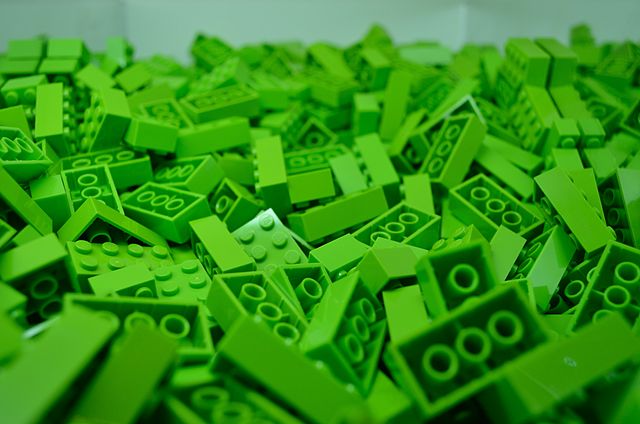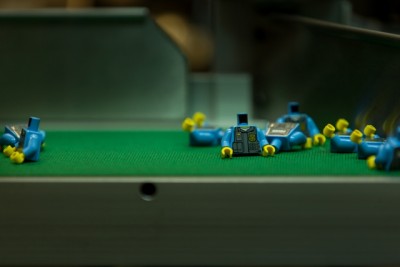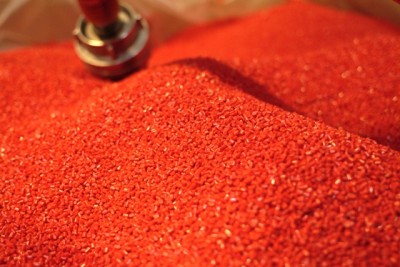
Green Lego bricks? Iconic toy maker focuses on sustainability as sales soar
by Cleantech Canada Staff

Star Wars Lego 'forces' up revenues, leaving brick maker free to launch string of investments in renewables, environmentally-friendly materials

Lego plans to open a centre to research and develop methods for making its bricks more sustainably in 2018.
BILLUND, Denmark—The Lego Group is building more than just the world’s most popular plastic toy bricks.
As sales of its growing portfolio of colourful sets continue to soar, the Billund, Denmark-based company is also working to put together a more sustainable company—no small task for a manufacturer that uses oil-based plastics to build almost all of its merchandise. Never one to let a lack of imagination hold it back though, the toy maker plans to make a go of going green.
Facing off against the significant cleantech challenge, the company’s current financial position is a strong start. Last week, the Lego Group posted another year of earnings steeped in black ink. Driven by double-digit growth across all its operating regions, including in the U.S., U.K., France, Brazil, China and Japan, the company reported 35.8 billion Danish krone (approximately $7.1 billion) in revenue, up 25 per cent from last year, as well as a net profit of 9.2 billion krone (approximately $1.8 billion), an improvement of 30 per cent over 2014.

Lego’s minifigures in production at a facility in Kladno, Czech Republic. PHOTO: The Lego Group
“We have achieved significant growth in sales every year for a decade now, and it is highly satisfactory that we can deliver yet another year of double digit sales growth,” John Goodwin, Lego Group’s executive vice-president and CFO, said. “I am excited that we have achieved this growth, driven by innovation and global expansion, while maintaining our focus on product quality and safety.”
Thanks in part to the success of its Star Wars branded sets, as well as its NINJAGO and Elves product lines, the brick maker was able to continue its string of record performances. A remarkable turnaround for a company that was over-extended and on the verge of financial ruin just over a decade ago, Lego now contends with Mattel and Hasbro for the largest toy maker crown.
And building on its financial success, the company is actively investing in a range of corporate social responsibility projects that centre on sustainability.
Foremost among them, Lego has committed to making a 1 billion krone ($200 million) investment in developing a more sustainable way to manufacture its bricks. Churning out tens of billions of plastic building blocks and mini figures every year, the company currently produces most of bricks from oil-based acrylonitrile butadiene styrene (ABS) plastic.

The plastic granulate (ABS) LEGO uses to produce most of its bricks. The plastic is heated to an average of 250 C before before being injected into molds. PHOTO: The Lego Group
Though it has already taken steps to use recycled materials in its production, and managed to improve its energy efficiency 5 per cent throughout 2015, the Sustainable Materials Centre will take the company’s green efforts to the next level. Announced last year, the Lego Group has now firmed up a construction schedule. The company will break ground on the project next year, while the centre is slated to open in 2018.
“It is a complex task to find and implement new materials that do not compromise the safety, quality or durability of our current materials. We are busy building the organisation and we expect to enter into partnerships during the coming years which hopefully means that we will see tangible actions as early as 2017,” Goodwin said.
In additional to making Lego greener, the toy maker’s parent company, Kirkbi A/S—which is owned by the family of Lego creator Ole Kirk Christiansen—has also invested millions in offshore wind energy projects. The company owns a 31.5 per cent stake in Germany’s 277 MW Borkum Riffgrund 1 wind farm, which came online last year, and announced last month that it would make a further 6.6 billion krone ($1.3 billion) investment to help finance the Burbo Bank Extension wind farm off the coast of the U.K.
Through the investments, Lego is aiming to use or offset 100 per cent of its energy with clean power by 2020.
And as the brand continues its march across the globe, Lego is proving sustainability and profitability are not mutually exclusive.